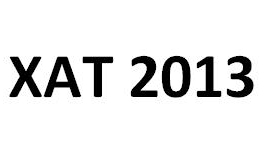Now that you have brushed your concepts, revised important questions and attempted past XAT papers and Mock XATs let us finalize the strategy for maximizing your XAT score.
XAT has is a three section, no sectional time limit, differential marking for questions within a section, sectional cut offs and (occasionally) differential negative marking for incorrect answers. XAT like IIFT is considered an unpredictable paper but the unpredictability of the MBA entrance tests is by and large limited to its “structure”. Thus the number of sections, number of questions in each section, marks per question, the extent of negative marking etc. keep on changing but the “content” or the type of questions that are asked is reasonably constant and does not change every year. Thus the question types in 2012 and 2013 papers are likely to be very similar but those of 2006 and 2012 are likely to be very different. Whenever the paper has made wholesale changes in the content it has bombed as was the case with XAT 2011.
What about XAT 2013?
As you are aware XAT 2013 is a 3 hours paper that is divided in two parts:
- Part A: 2 hours 20 minutes comprising Quantitative Ability, English Language Ability & Logical Reasoning Ability and Decision Making.
- Part B: 40 minutes for Essay writing and General Awareness. The questions in General Awareness will be from business, economics and politics related to business environment.
In addition to what XAT has announced I am reasonably sure that the XAT 2012 pattern will be followed. After the disaster in 2011 the XAT regained lost ground with the 2012 paper as it captured the positives of 2011 and earlier papers. I expect XAT 2013 to have the following features:
- Pattern: 3 section paper similar to XAT 2012.
- No. of questions: 85-100, could be higher than XAT 2012 due to extra 20 minutes for Part A.
- Sectional breakup:I expect XAT 2013 to be of 100 marks with approximately 35-40 marks for QADI and 30-35 marks each for ARDM and English.
- Sectional time limits: No.
- Differential marking: Yes.
- Negative marking: Yes 25% as there are 5 choices for each question.
Now with this structure in mindlet us look at different aspects of attempting the paper.
Time allocation
Spend the first 5 minutes scanning the paper to understand the focus of each of the section so you have only 135 minutes for solving the questions. These 135 minutes can be allocated to the sections in the following ways:
- Equality: Go for this if you are by and large comfortable with the three sections. Given that you need to get a minimum score in each section and the marks allocated to each section are almost equal, plan for 45 minutes in each section.
- Support the Weak:If you are weak in a particular section and are not confident of clearing the sectional cut off in 45 minutes then you have to obviously consider extra time for your weak section at the expense of your stronger section. You can consider up to 55 minutes for your weakest section but make sure that your strong section gets at least less 40 minutes.
- The Joker: Do not worry about scanning the paper and save the 5 minutes. Stat attempting the sections by giving 40 minutes to each section and spend the final 20 minutes (the Joker) in your strongest sectionto maximize your total score. Obviously this assumes that you can clear the sectional cutoff of each section in 40 minutes.
Strategy Tip 1: Stick to your time limits
Do not get tempted to spend more time in a section to either clear the cutoff or to increase your score, it will adversely impact the subsequent section(s).
Attempt Sequence
Sandwiching your weakest section in the middle with the two stronger sections on either side is the preferred sequence. Starting with your strongest section will ensure that you are able to maximize the score in your strongest section and if you leave your weakest section for the end when you are tired will lead to very high errors.
Strategy Tip 2: Do not ignore the last section
Ensure at least 40 minutes are available to the last section that else you may not have sufficient attempts to clear the sectional cutoff.
English Language Ability and Logical Reasoning
In the last four years this section has contributed around 33 questions for about 30-35 marks. Critical reasoning is the most important component of this section and typically contributes 15 questions. Reading Comprehension with about 10 questions from 2-5 passages, vocabulary (synonym, antonym, analogy, usage and fill in the blank) with 7-8 questions and 2-3 para-jumble questions complete the quorum.
Start this section by attempting the Vocabulary based questions without any guess work, if you are not sure of the answer leave it un-attempted. Para jumbles have not appeared in the last two years but if they appear then they should be your next attempt and then move on to RC or CR depending upon your comfort level. Remember the RC questions are also inferential hence there is not much to choose between RC and CR except the length of the passage and the occasional factual question.
Suggest that you start this section by quickly attempting the 7-8 vocabulary questions in 5 minutes and then move on to CR questions and RC passages for which you would have over 1.5 minutes per question.
Strategy Tip 3: Take your time
Do not rush thru the CR questions or RC passages. Skimming is unlikely to work here as most questions are inferential. Use the 4 Rules of para-completion to eliminate choices.
Target attempts:If CR is your strength then target attempts worth 22-25 marks in this section else be content with attempts of 17-20 marks. Focus on accuracy.
Analytical Reasoning and Decision Making
Till 2010 about 70% questions were from Analytical Reasoning but in the last two years Decision Making has been the bigger contributor with over half the questions from DM. Analytical reasoning data sets will require working hence do not hesitate to make liberal use of pencil and paper for solving them.
While most of you who are good in QA and calculations would be happy with AR sets but my suggestion is to start with DM questions since these consume less time than AR questions. Those of you who attended the DM session by Mr. Niraj Prasad would have realized that most of the DM questions can be answered by application of common sense and elimination of choices. As in CR/RC, please read the passage carefully, consider all aspects of the situation and do not jump to conclusions.
Strategy Tip 4: Maximizeyour attempts
This is the section to maximize your score since all questions are solve-able.
Target attempts:The target attempts in ARDM section should be around 22-25 marks depending upon the number of DM questions and your reading speed. Higher the number of DM questions higher should be your attempt. Ensure that all DM questions are attempted.
Quantitative Ability and Data Interpretation
This section is likely to have a sense of déjà vu about it – it could feel like a replay of CAT QA. In the last few years CAT and XAT QA have become so close that the questions in CAT and XAT are interchangeable and hence the CAT QA techniques have to be applied here also. The 35 odd questions of this section will have a mix of easy, medium and difficult questions and leaving the difficult ones is as important as attempting the sitters. Do not get tempted by higher marks for the difficult questions.
Strategy Tip 5: Go for the Round theory
Attempt this section in3 Rounds – R1 for the sitters, R2 for DI & questions of medium difficulty and R3 for the leftovers.
Target attempts: An attempt of around 17-18 questions is a very good for this section but those of you who are very good in QADI can target 22-25 questions.
Overall Target Attempts and score
Minimum safe score for a call from XLRI has been less than 35 for BM and 32 for PMIR in a 120 minute paper. This year the time available will be 140 minutes hence your minimum overall target attempt and net score should be 55-60% and 45% respectively of the total marks for the paper.
The Last Word
The above plan is based on the assumption that XAT 2013 will be similar to that of XAT 2012 however XAT may spring a surprise so do read the instructions carefully, scan the paper for deviations and make adjustments to your plan accordingly.
All the best, see you on 6th January at 4pm for the analysis.











what will be cuttof for sc category for xiss
Roopessh, there is a cutoff for every category but it is likely to be very low for SC category
Sir,
according to u, what is the likely cut off TAPMI, GIM, XISS and WELINGKER MUMBAI under XAT 2013.. and does any of these apply sectional cut offs.? and is the essay read just by XLRI or by all insti under XAT? kindly reply soon..
Kshitij TAPMI, XIM & GIM should have a cut off around 25-26 Welingkar around 20-22 and XISS around 18-20. Most of these either do not have sectional cutoffs or such low cutoffs that they do not matter.
sir doing past 3years paper more than enough for XAT? since i found the papers from 2006-2008 have easier verbal and quant.
Rahul, this is enough. All the best.
Sir, what is the importance of essay and general awareness in xat and especially for xlri admission?
Jeet, essay is evaluated at the time of the interview. GK has been introduced this year and is likely to be again considered only at the interview stage by XLRI. These two will not impact your percentile scores.
sir, how much essay can influence a call conversion during interview? If anyhow essay doesnt go well then is there no chance even with a good score in xat?
u can go to this link for attending his webinar anytym u wnt to….
“http://www.careerlauncher.com/classapart/”
Hi GP Sir,
I haven’t attended Niraj Sir’s DM class. Can u provide me some insight in this as I am not afforded to lose this concept.
Saish, the video is available at http://www.careerlauncher.com/classapart/videos.html
Thank you Sir.
thank You so much sir, but which section could come up with major surprise?
Ambuj, it could be any of the three or maybe none – cannot be predicted. The purpose of reading the instructions and scanning the paper in the first 5 minutes is to take care of the surprise element.